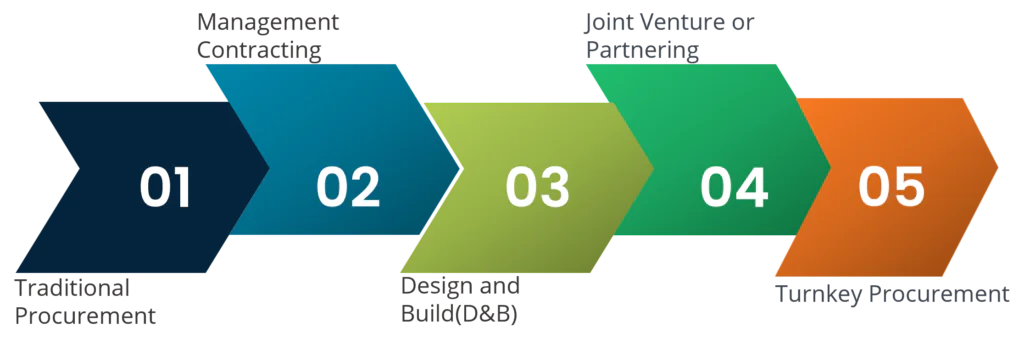The choice of the procurement process is vitally important to the success of any construction project. Also, the type of procurement that companies in the construction industry choose is a major deciding factor of their overall profitability and is vitally important to the success of any construction project. Construction companies compare various types of procurement and opt for an ideal one based on key parameters such as topography, logistics, weather, available technology, finance, labor availability, and services. Before looking at the types of procurement, it is important to be acquainted with functions carried out in the construction industry and the parties involved. Generally, five functions are undertaken in a construction project – design, build, management, finance, and operation. Furthermore, the main parties involved in a construction contract include the client, consultant, and contractor.
Get a free demo of our market intelligence solutions at SpendEdge
Types of Construction Procurement

Traditional Procurement
This is one of the most basic types of procurement where the responsibility of a contractor is limited only to build. All design works and management of contract are carried out by a consultant or an engineer. The fact that the construction industry has been working with this method for a long time is its main advantage since it has established parameters that have been laid out for assessing the value for money of this type of procurement path. However, the poor influence that the contractor as an operational party has over the design cost involved, and risk allocation are considered to be the main disadvantages of this approach.
Management Contracting
Management contracting is one of the important types of procurement in the construction industry. In this approach, in addition to the client, the consultants and contractors and specialized contractors become a participant. The contractor acts as a manager for the project whereas specialized contractors undertake the real build aspect in their specialized field. Finance and operation are carried out by the client in such projects. This method is adopted when there are possibilities to identify projects in packages.
Design and Build(D&B)
In this type of construction procurement, the same contractor is meant to design and construct the project, meaning that a closer collaboration is required in the process and all risks are allocated to the contractor. The design and build responsibility is usually covered by the contractor. The consultant’s scope is only limited to the management of the contract. The client is responsible for finance and operations.
Joint Venture or Partnering
The barriers between parties often could result in major problems in the construction contract. In order to overcome barriers, different parties must establish a working environment based on trust, mutual objectives, teamwork, and sharing risks and rewards. The success of such types of procurement largely depends on a memorandum of understanding between the parties involved. Identifying responsibilities of each party is slightly difficult in the joint venture procurement system.
Turnkey Procurement
In turnkey procurement, a single contractor or developer is responsible for the entire project, from design to construction and final delivery. The client only needs to provide the project requirements, and the contractor takes care of the rest. Turnkey procurement offers several advantages to clients. It simplifies the process by eliminating the need for multiple contractors and streamlines project management. Additionally, it reduces the client’s workload and allows them to focus on other aspects of their business while the contractor handles the project.




